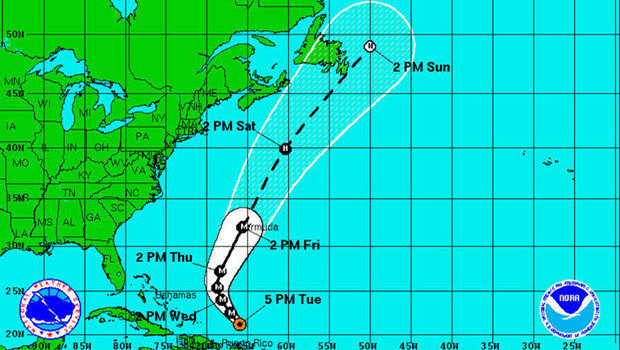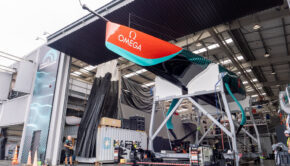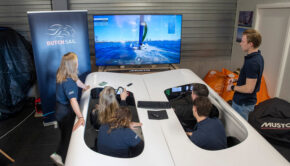Hurricane forecasting could be compromised during America’s Cup
Published on February 17th, 2015
First some facts…
– A distinct hurricane season occurs in the Northern Atlantic Ocean from June 1 to November 30.
– Bermuda is in the Northern Atlantic Ocean.
– 35th America’s Cup will be in Bermuda in June 2017.
– 35th America’s Cup will be held during hurricane season.
– Forecasting is critical to hurricane safety and survival.
– Forecasting in June 2017 may be severely compromised.
Now a report published by Risk Market News…
Hurricane modelers and forecasters face an 11 month “satellite gap” that could compromise their work if plans to replace an aging orbiters continue to lag behind, according to a U.S. government report issued last week.
Delays and potential cost spikes at the National Oceanic and Atmospheric Administration‘s (NOAA) $11.3 billion Joint Polar Satellite System program have the potential of creating a nearly year-long period where robust weather data is either missing or severely limited, according to a U.S. Government Accountability Office (GAO) report released on February 12.
“According to officials at NOAA, a polar satellite data gap would result in less accurate and timely weather forecasts and warnings of extreme events, such as hurricanes, storm surges, and floods,” the GAO report states. “Such degradation in forecasts and warnings would place lives, property, and our nation’s critical infrastructures in danger.”
The potential satellite gap could extend from October 2016 (the end of life of the current polar satellite) through March 2017 (the expected launch of the new orbiter) and until “[the new satellite] undergoes on-orbit testing until September 2017,” the report states.
Polar-orbiting satellites, which have been used since the 1960’s, circle the earth in a north-south orbit twice a day and provide coverage of long term conditions that affect the weather and climate. The satellites are used by public and private forecasters in the U.S and internationally.
The NOAA can mitigate the potential of a gap by extending the life of polar satellites already in orbit, relying more on data from aircraft, focusing on a global forecast model and bumping up its computing capacity, the GAO argues. However, those solutions will have limited impact.
“Given the criticality of satellite data to weather forecasts, concerns that problems and delays on the new satellite acquisition programs will result in gaps in the continuity of critical satellite data, and the impact of such gaps on the health and safety of the U.S. population, we concluded that the potential gap in weather satellite data is a high-risk area,” the report states.
The GAO also raised concerns regarding the NOAA $10.8 billion Geostationary Operational Environmental Satellite-R (GOES-R) program, which provides data for shorter-term forecasts. The report states that “program has continued to experience delays in major milestones and has not efficiently closed defects on selected components, both of which could increase the risk of a launch delay.”









 We’ll keep your information safe.
We’ll keep your information safe.